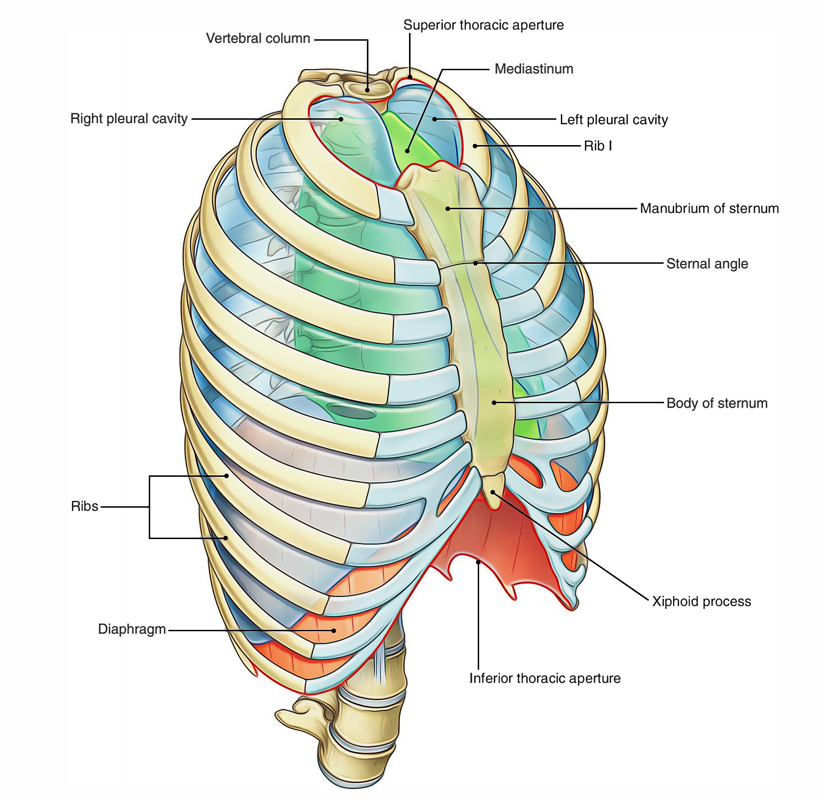The Thorax is an irregularly shaped cylinder with a narrow opening, called as superior thoracic aperture; and inferiorly it is a relatively large opening called as inferior thoracic aperture. The superior thoracic aperture is open from where it enables the continuity of the thorax together with the neck; whereas the inferior thoracic aperture is closed by the diaphragm.

Thorax and its Functions
1. The musculoskeletal wall of the thorax is flexible and is composed of segmentally arranged vertebrae, ribs, and muscles and the sternum. The thoracic cavity enclosed by the thoracic wall and the diaphragm is subdivided into 3 major compartments:
- A left and a right pleural cavity, every encompassing a lung.
- The mediastinum.
2. The mediastinum is a thick, flexible soft tissue partition oriented longitudinally in a median sagittal position. It includes the heart, esophagus, trachea, major nerves, and major systemic blood vessels.
3. The pleural cavities are entirely divided from every other by the mediastinum. Consequently, abnormal occasions in 1 pleural cavity don’t exactly change the other cavity. This also means the mediastinum can be entered surgically without opening the pleural cavities.
4. One other essential attribute of the pleural cavities is they go above the level of rib I. The apex of every lung really extends into the root of the neck. As a consequence, abnormal events in the root of the neck can entail the adjacent pleura and lung, and occasions in the adjacent pleura and lung can entail the root of the neck.
Functions
Breathing
One of the very essential functions of the thorax is breathing. The thorax not only includes the lungs but also gives the machines essential the diaphragm, thoracic wall, and ribs for efficiently moving air into and out of the lungs.
Up and down movements of the diaphragm and changes in the lateral and anterior measurements of the thoracic wall, caused by movements of the ribs, change the amount of the thoracic cavity and are key components in breathing.
Protection of Vital Organs
The thorax houses and protects the heart, lungs, and great vessels. On account of the domed shape of the diaphragm, the thoracic wall also offers protection to some essential abdominal viscera.
A lot of the liver is located under the right dome of the diaphragm, and the stomach and spleen is located under the left. The posterior aspects of the superior posts of the kidneys is located on the diaphragm and are anterior to rib XII, on the right, and to ribs XI and XII, on the left.
Conduit
- The mediastinum functions as a conduit for structures that pass entirely via the thorax from 1 body region to another and for structures that attach organs in the thorax to other body regions.
- The esophagus, vagus nerves, and thoracic duct go through the mediastinum as they course between the abdomen and neck.
- The phrenic nerves, which starts in the neck, also go through the mediastinum to enter and supply the diaphragm.
- Other structures like the trachea, thoracic aorta, and superior vena cava course inside the mediastinum en route to and from major visceral organs in the thorax.

 (56 votes, average: 4.70 out of 5)
(56 votes, average: 4.70 out of 5)